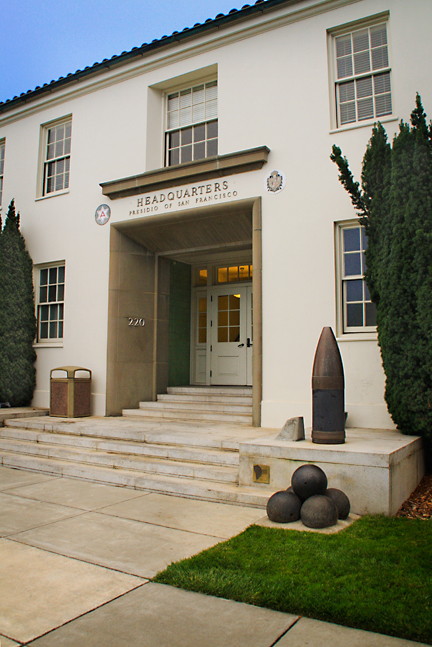F I R S T P R E V
P R E V 866
866 NEXT
NEXT LAST
LAST


Protecting San Francisco, The Presidio Headquarters
Question: Has San Francisco ever been invaded by a sea-borne military force? If you answered no, then you might be surprised to learn that it was.
On July 1, 1846 an old Spanish fortress standing at the location where Fort Point now sits was assaulted by a force led by Charles Fremont, his scout Kit Carson, and 60 soldiers. Fremont and his men, fresh from the 'Bear Flag Revolt' in Sonoma two weeks earlier, arrived at the north shore of the Golden Gate intent on crossing the span and attacking the Mexican troops in the old fortress. Fremont imagined that by capturing the fortress, the resulting fame would pave his road to the Governorship of California.
Only one problem, Fremont didn't have a boat. Luckily he was able to find a merchant windjammer, the Moscow in Sausalito that was owned by Captain William Phelps. Phelps hadn't heard that United States was at war with Mexico and was reluctant to let his boat be used. Fremont grandly promised Phelps $10,000 for the use of the boat on such a risky, hazardous adventure and Phelps agreed. Fremont loaded the boat with 12 of his soldiers and set off to glory.
Fremont would later write that the daring invasion took place at daybreak and the heavy enemy force fled under his assault allowing him to capture the fortress and its 14 long brass cannons. In reality, as other accounts showed, the ramshackle fortress was long abandoned and the few cannons that remained were unable to fire due to decades of neglect. A few of the derelict pieces were later hauled away and restored at a location near Telegraph Hill, from which Battery Street derives its name.
In the end, the result of the invasion of San Francisco was that Charles Fremont became famous for his fanciful account of the event and went on to become the Military Governor of California and later the first presidential candidate of the Republican Party. As for Captain Phelps, the owner of the Moscow, he fought for years to get his promised $10,000. But in 1853 he was awarded just $50 by the U.S. Government. Anyone interested in drawing comparisons to this event and current political affairs, please feel free.
[
MAP E-9 ]